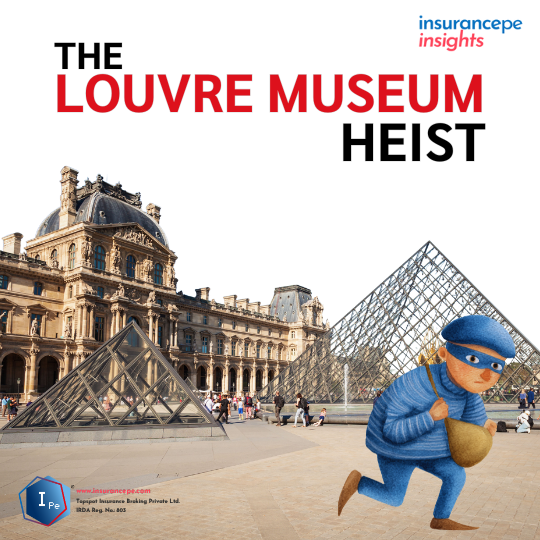
On October 19, 2025, one of the most daring museum heists in recent memory took place in the heart of Paris. In just seven minutes, four masked thieves used a crane to access the Apollo Gallery of the Louvre Museum, smashed a window, and made off on electric scooters with crown jewels valued at a staggering €88 million (approximately $102 million).
These included tiaras, earrings, necklaces, and brooches belonging to royalty like Queen Marie-Amélie, Queen Hortense, and Empress Eugénie. Though security footage was limited, authorities recovered one crown abandoned in the escape, but most of the artifacts remain missing.
In the aftermath, many were stunned to learn that none of the stolen items were insured. How could the world’s most-visited museum, holding one of the richest art and cultural collections in existence, choose not to insure such priceless objects?
The answer lies in the French government’s policy of self-insurance. For permanent collections held by national museums like the Louvre, the State acts as its own insurer. This means that in the event of theft, vandalism, or damage, there is no insurance payout. The state simply absorbs the loss.
This is not an unusual practice among major institutions housing irreplaceable heritage assets, but it comes with major financial risks.
In an earlier article, we brought to your attention that, housed in the same museum, the Mona Lisa isn’t insured.
Why? Because it’s considered “priceless” and no insurance policy could truly compensate for its loss. Moreover, insuring such an item would demand astronomical premiums and impose extreme limitations on access and handling.
The rationale behind this is that extreme security and risk mitigation are more feasible than buying a policy for billions of dollars. But as the recent heist shows, even those efforts aren’t foolproof.
While national museums may self-insure because of budgetary strategy or administrative practicality, individuals and businesses don’t have that luxury. If your home were burgled, your vehicle vandalized, or your valuable collection stolen, would you be able to bear the loss out-of-pocket? Probably not.
That’s where insurance becomes your safety net, covering losses from theft, accidents, fire, or even natural disasters. Whether it’s your home, car, art, or health, a carefully structured policy gives you peace of mind and financial protection against the unexpected.
High-value items like art, collectibles, and antiques are typically excluded or minimally covered under standard home insurance. This is why collectors opt for specialised art insurance policies, which cover:
Such policies also establish an agreed value in advance, simplifying claims and avoiding disputes.
There is one instance where museums like the Louvre do take insurance: exhibitions and temporary loans. If a painting or artifact is loaned to another institution, it’s covered under “nail-to-nail” insurance, from the time it’s removed, during transit, through the exhibition period, and until it’s safely returned.
This is also applicable to private collectors and galleries hosting or transporting valuable items. Here, insurers often inspect the security arrangements and establish strict conditions before underwriting the policy.
Even though the stolen jewellery is worth over $100 million, prosecutors and museum experts emphasize that the true loss is cultural and historical, not financial. These pieces were one-of-a-kind royal artifacts from the 19th century, not easily replaceable or replicable.
But once again, they weren’t insured because they were considered too important. But now, they’re gone, possibly dismantled, melted down, or sold in black markets, never to be recovered in their original form.
This incident is a stark reminder: Risk exists even in the most secure places. If an institution like the Louvre can suffer from gaps in security and financial protection, so can you. And unlike the French government, most of us cannot afford to absorb major financial loss without insurance.
insurancepe believes that whether you’re protecting your home, insuring your health, or safeguarding your business, insurance is the only practical way to mitigate irreversible financial damage. Don’t wait for loss to understand the value of protection. Talk to us about insuring what matters most to you.
This blog post is brought to you by the minds at insurancepe!
Got questions or doubts about anyone insurance?
Need advice or help understanding your insurance needs?
Want the best bang for your buck when buying insurance?
We got you!
Reach out to us at:
Whatsapp/Phone: 89779 18030
E-mail: contact@insurancepe.com
Visit us at www.insurancepe.com